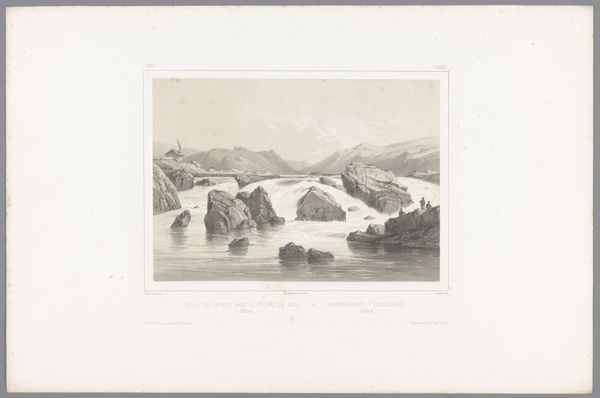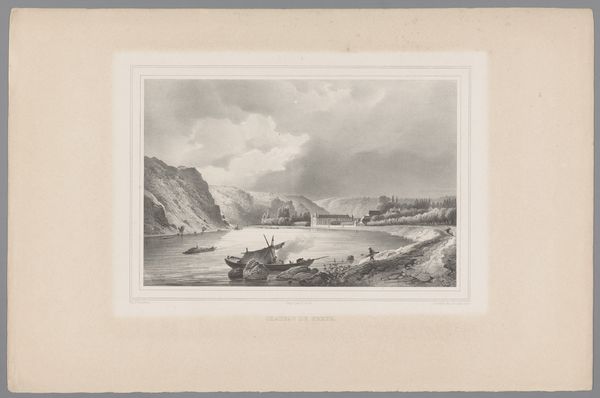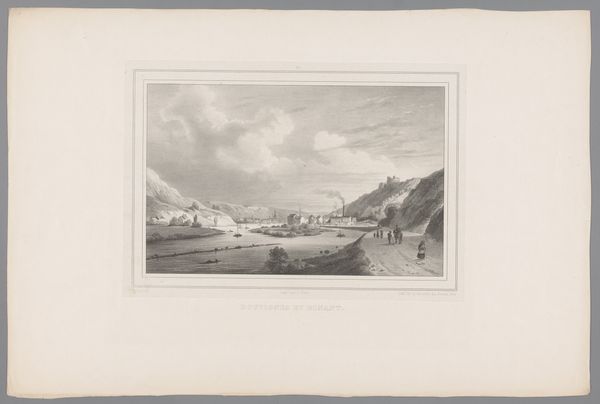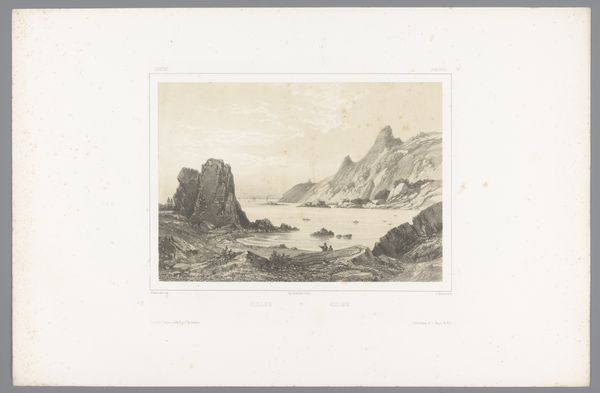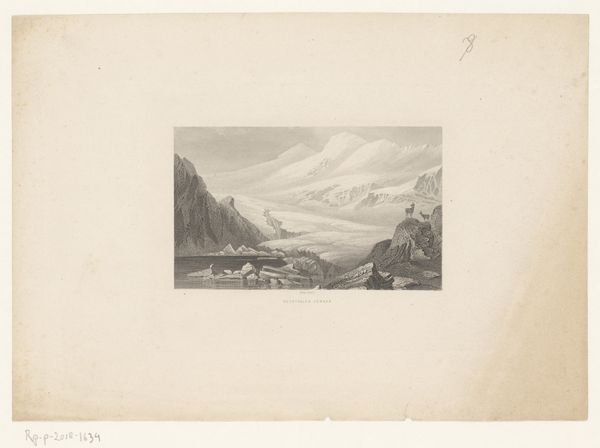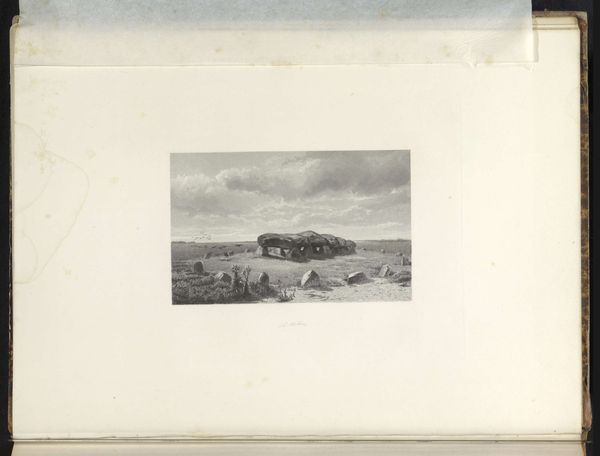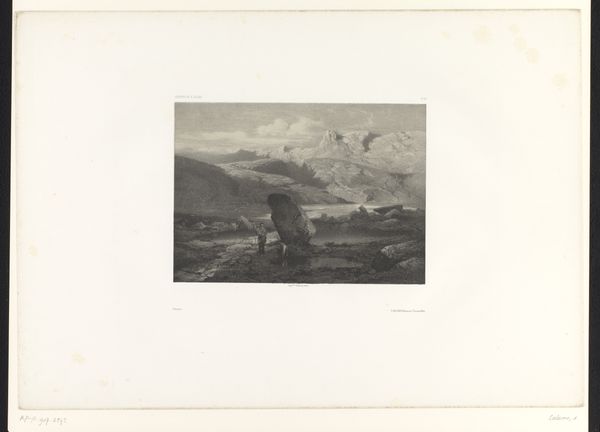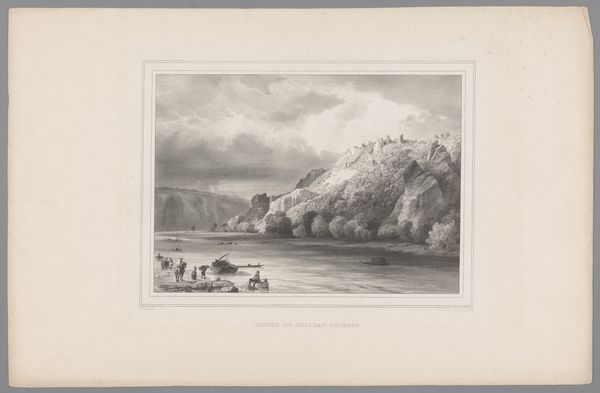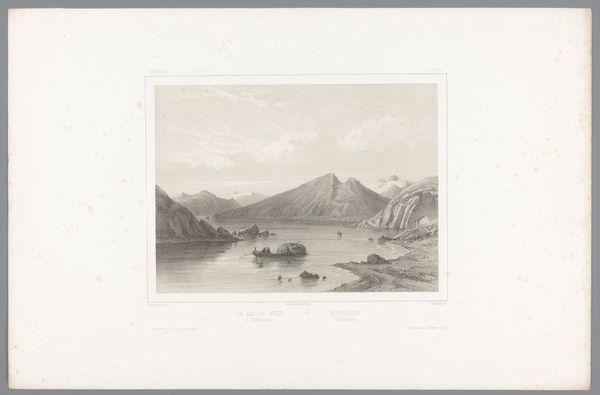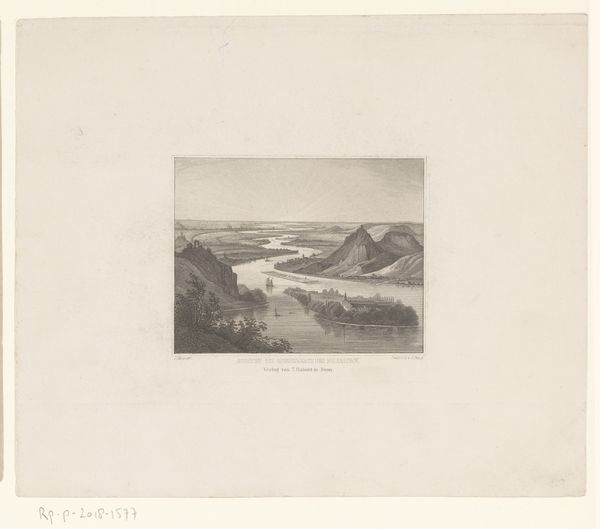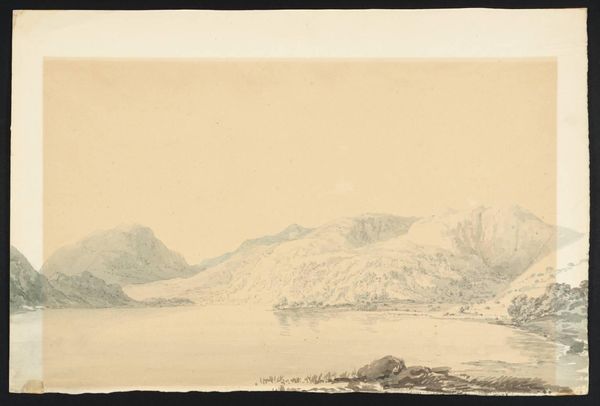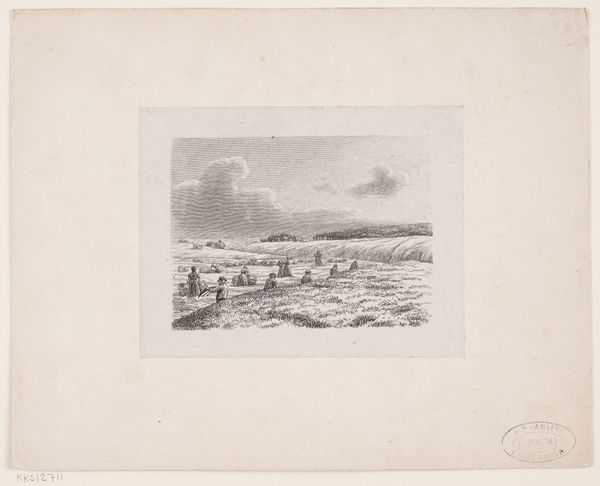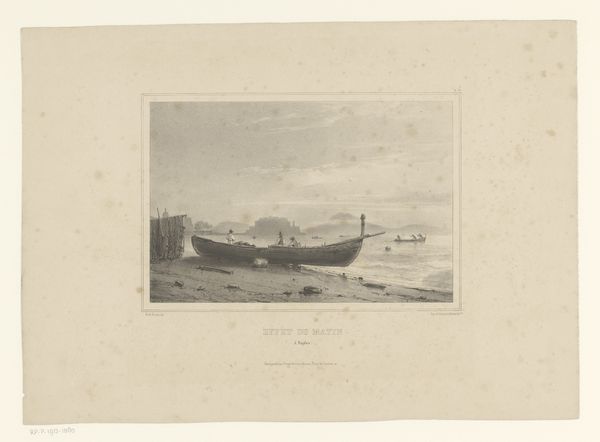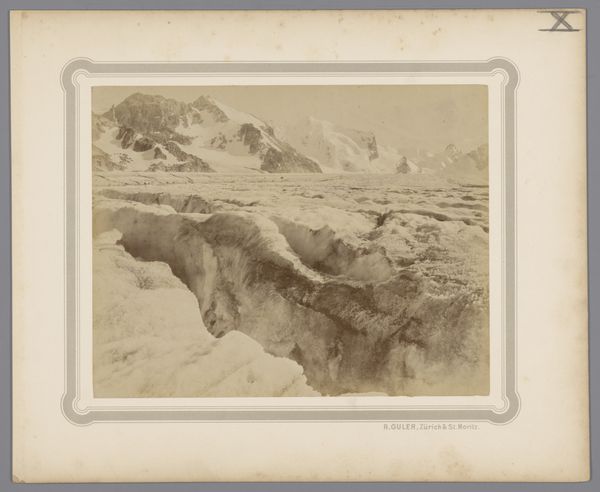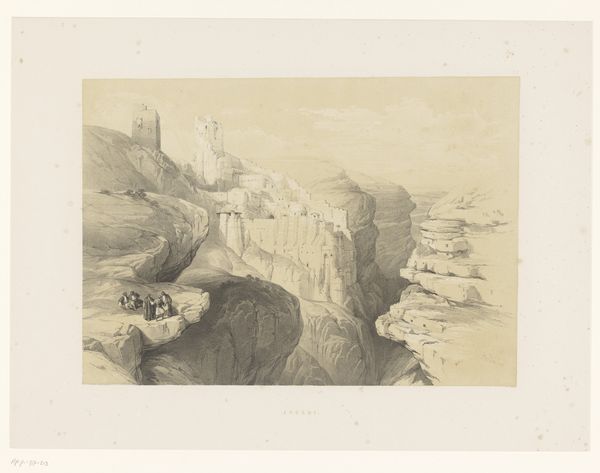
Dimensions: height 401 mm, width 565 mm
Copyright: Rijks Museum: Open Domain
Eugène Cicéri made this lithograph depicting the Märjelensee and Aletsch Glacier. The lithographic process is critical to understanding this print. Unlike traditional drawing, where the artist directly marks the paper, lithography involves a complex sequence of steps. First, the image is drawn onto a stone or metal plate with a greasy crayon, and then the surface is treated so that ink adheres only to the drawn areas. This allows for the production of multiple identical prints, making images like this accessible to a wider audience. The tonal range achieved through lithography lends itself to capturing the stark, glacial landscape. The subtle gradations of light and shadow convey the immensity and the weight of the ice. It's a reminder that images, like objects, are made through labour. Considering the historical context, the rise of lithography in the 19th century coincided with the growth of industrial capitalism and a fascination with landscape. Images like this fueled the public's imagination, allowing them to experience the sublime power of nature. By appreciating the materials and techniques, we gain insight into the cultural and social values of the time.
Comments
No comments
Be the first to comment and join the conversation on the ultimate creative platform.
